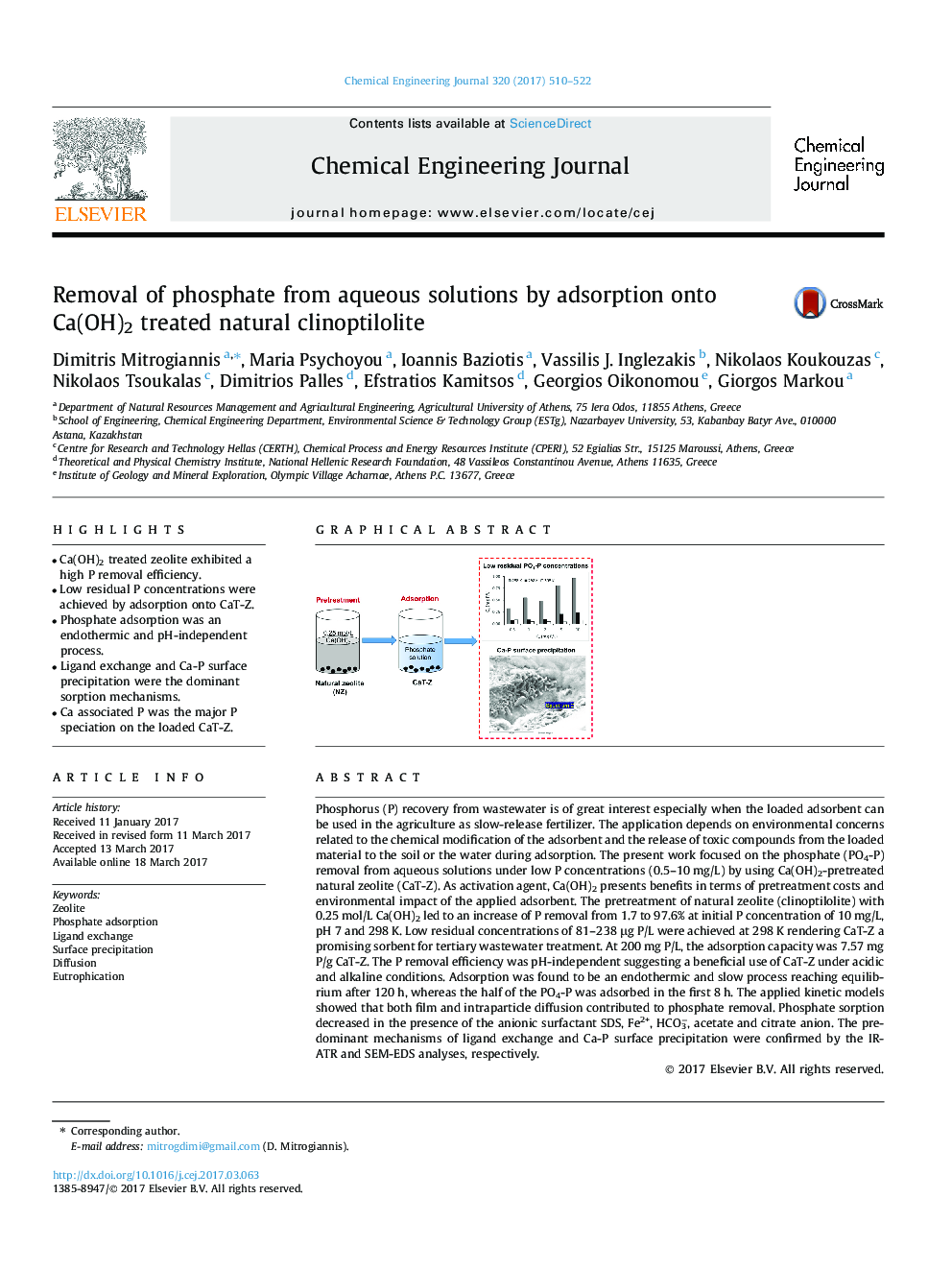| کد مقاله | کد نشریه | سال انتشار | مقاله انگلیسی | نسخه تمام متن |
|---|---|---|---|---|
| 6465965 | 1422958 | 2017 | 13 صفحه PDF | دانلود رایگان |

- Ca(OH)2 treated zeolite exhibited a high P removal efficiency.
- Low residual P concentrations were achieved by adsorption onto CaT-Z.
- Phosphate adsorption was an endothermic and pH-independent process.
- Ligand exchange and Ca-P surface precipitation were the dominant sorption mechanisms.
- Ca associated P was the major P speciation on the loaded CaT-Z.
Phosphorus (P) recovery from wastewater is of great interest especially when the loaded adsorbent can be used in the agriculture as slow-release fertilizer. The application depends on environmental concerns related to the chemical modification of the adsorbent and the release of toxic compounds from the loaded material to the soil or the water during adsorption. The present work focused on the phosphate (PO4-P) removal from aqueous solutions under low P concentrations (0.5-10 mg/L) by using Ca(OH)2-pretreated natural zeolite (CaT-Z). As activation agent, Ca(OH)2 presents benefits in terms of pretreatment costs and environmental impact of the applied adsorbent. The pretreatment of natural zeolite (clinoptilolite) with 0.25 mol/L Ca(OH)2 led to an increase of P removal from 1.7 to 97.6% at initial P concentration of 10 mg/L, pH 7 and 298 K. Low residual concentrations of 81-238 μg P/L were achieved at 298 K rendering CaT-Z a promising sorbent for tertiary wastewater treatment. At 200 mg P/L, the adsorption capacity was 7.57 mg P/g CaT-Z. The P removal efficiency was pH-independent suggesting a beneficial use of CaT-Z under acidic and alkaline conditions. Adsorption was found to be an endothermic and slow process reaching equilibrium after 120 h, whereas the half of the PO4-P was adsorbed in the first 8 h. The applied kinetic models showed that both film and intraparticle diffusion contributed to phosphate removal. Phosphate sorption decreased in the presence of the anionic surfactant SDS, Fe2+, HCO3â, acetate and citrate anion. The predominant mechanisms of ligand exchange and Ca-P surface precipitation were confirmed by the IR-ATR and SEM-EDS analyses, respectively.
78
Journal: Chemical Engineering Journal - Volume 320, 15 July 2017, Pages 510-522